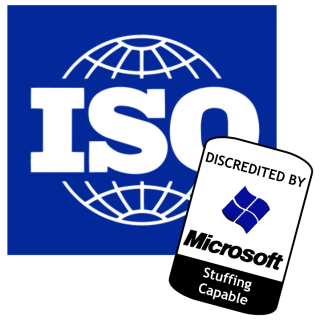

IDG's pseudo-open source blog has a new hit today. It's Microsoft's Walli [1, 2] again and he wants to educate us dumb communists, explaining to us what "Open Source" really means. "Please Don’t Confuse Standards with Open Source Software" says his headline and one can imagine the rest of those Microsoft talking points. Microsoft loves proprietary software development methods and when it comes to standards, it loves labeling its own proprietary APIs/protocols "standards" (recall what Microsoft did to ISO).
While software giant Microsoft has been trying to tell the world plus dog that it really loves Open Sauce, there are signs that some company executives did not get the memo.
Hernan Rincon, president of Microsoft Latin America, has been hitting the press claiming that "open" really is a way of saying "incompetent":
He claimed when software companies cannot compete they are declaring their product to be "open". This apparently "masks incompetence".
"When convenient, the companies say they are open and they they use it for your own benefit, " he added in our Babelfish translator.
The browser seems to an obese boy, unlike lean Chrome and Firefox. The setup file itself was twice the file size of Mozilla Firefox 4.
Firefox was smaller in size (10MB), almost half the size of IE9. It installed fast and was up and running while IE was still installing.
Typical of Microsoft's flint-stone age approach, you have to 're-start' your machine in order for IE 9 to work. Doesn't matter how much important work you are doing, you have to restart.
Comments
twitter
2010-09-18 04:12:02
There is little difference between this and the OOXML fraud besides ISO corruption. Do not expect Microsoft to make a format for meaningful cross platform document interchange.
So what happened with RTF? Nothing. I needed to get screen shots off a Windows system. I'd usually do that by running tsclient and a good gnu/linux capture utility like ksnapshot. The person running this Windows machine thought they knew better, so I sat back to see if I might learn something. Print screen seemed to load the clipboard up but paint, the only graphics program that comes with Windows, gave an error instead of pasting the clipboard contents. Ever resourceful, the operator put it all into Wordpad, the crippled text editor that comes with Windows. It looked like all of the images were there, even if only a small portion of them showed on each page but Open Office was unable to read the resulting RTF. At this point, I did what I knew would work instead of wasting more time with thumb drives and Microsoft's dishonest, inadequate and hostile software. Fooling with Windows taught me more than I wanted to know about how broken it is.